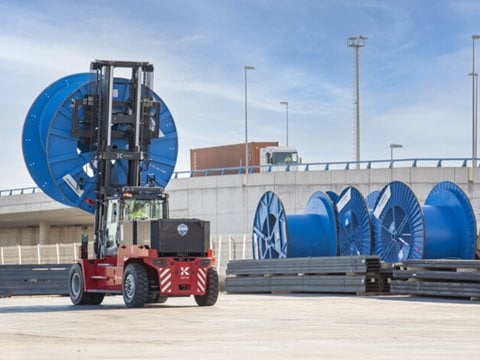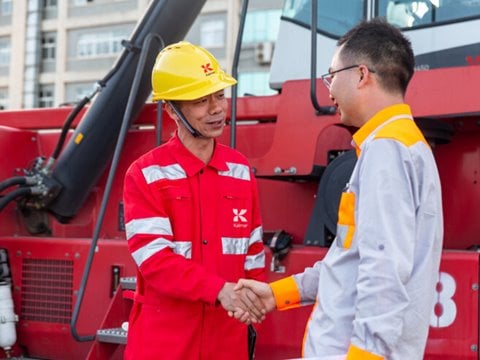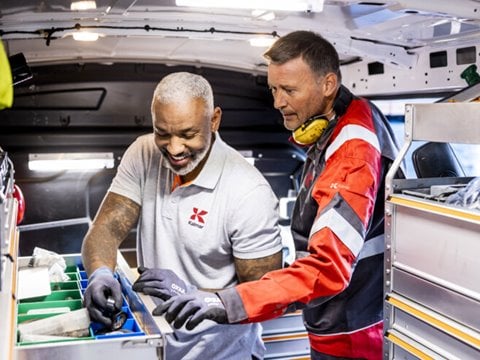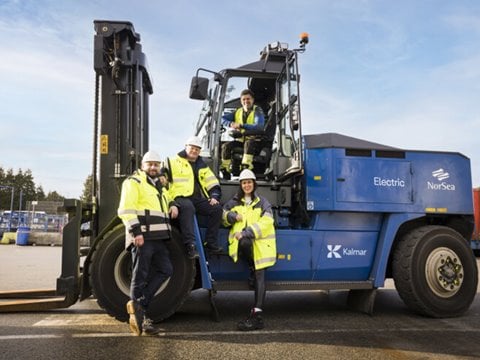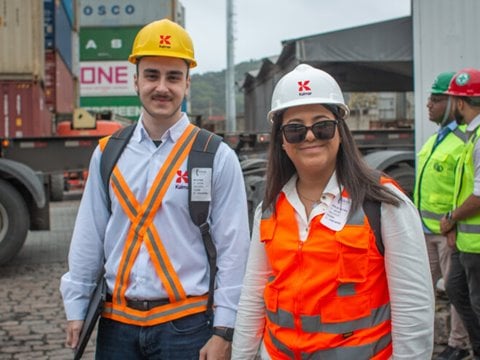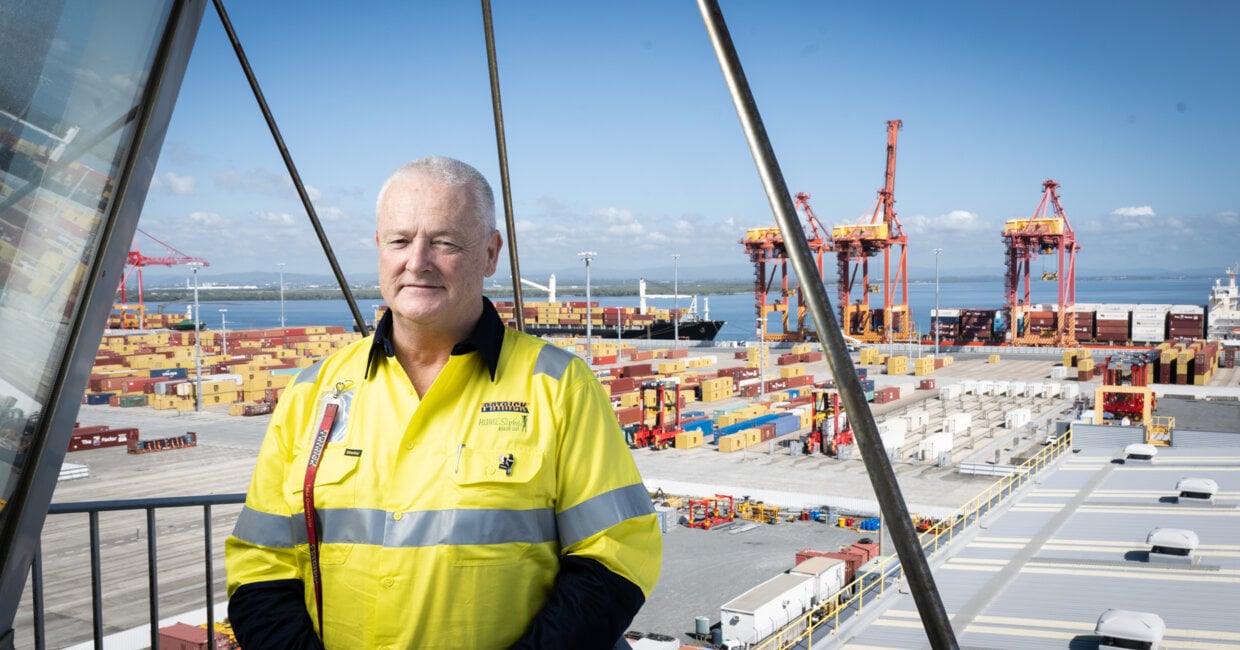
Automated truck handling: The last link in terminal automation
At Patrick Terminals Brisbane, automated truck handling for Kalmar AutoStrad™ enables full end-to-end automation of horizontal container transportation, improving safety and predictability while enabling 24/7 productivity.
Patrick Terminals is Australia's leading container terminal operator, handling over three million TEU annually. The company operates some of the most technologically advanced terminals in the world at four locations, including Kalmar AutoStrad™ terminals in Brisbane and Sydney.
Patrick Terminals Brisbane was the first terminal in the world to operate with AutoStrad™ container handling technology, and the terminal currently uses a fleet of 35 Kalmar AutoStrad™ for all of its horizontal container transportation. Patrick Terminals has now implemented automated truck handling for its fleet of Kalmar AutoStrad™, which means that the straddle carriers now autonomously place and pick up containers on road trucks without manual intervention.
The last part of the puzzle
The loading of containers on road trucks has traditionally been the most difficult step in container operations to automate, requiring manual intervention even in terminals that are otherwise fully automated. Automated truck handling for the Kalmar AutoStrad™ system is the first solution to enable the full end-to-end automation of container handling at straddle carrier terminals. The feature has earlier been available for Kalmar yard cranes and has recently been added to Kalmar’s automated horizontal transportation offering.
Automated truck handling automates the placement of containers from automated straddle carriers onto trucks in the terminal’s truck interchange zones. The system measures the truck’s profile, location and the container positions available, while an on-board camera imaging system on the Kalmar AutoStrad™ is used for fine positioning when placing the container onto the truck.
Automated truck handling improves the safety, predictability and cost-efficiency of terminal operations by eliminating the need for personnel to be present in the truck interchange zones. The system also automatically confirms the proper landing of the container on the trailer twistlocks, minimising the number of exceptions in the process and further increasing safety.
"Automated truck handling allows terminals to gain the full benefits of automation," says Oskari Tähtinen, Product Manager Horizontantal Transportation, Kalmar. "In addition to improved safety, the solution brings savings in operational costs while enabling 24/7 productivity with more predictability and flexibility. With complete automation of their straddle carrier fleets, terminals can now respond faster to changes in schedules or vessel arrival times."
Safety with efficiency
In addition to Patrick Terminals Brisbane, Kalmar automated truck handling is already in use at numerous automated straddle carrier terminals around the world, including at one of the world's largest mega terminals that run Kalmar Automated Straddle Carriers. Automated truck handling enables a fully automated container flow between quay cranes and trucks by automating the final stage of landside operations.
"Automation has profoundly changed the way we do business as a stevedore," says Matt Hollamby, Brisbane Manager, Patrick Terminals. "The automated truck handling solution for the Kalmar AutoStrad™ has been very successful and we're very pleased with it. Previously, loading containers onto trucks was the most difficult part of the process, and we have now solved that challenge."
"Automation has profoundly changed the way we do business as a stevedore."
Automation delivers extremely high levels of safety while improving the workplace ergonomics of on-site staff. Since implementing the Kalmar AutoStrad™ concept, Patrick Brisbane has become known as one of the safest container terminals in the world.
"Ergonomic injuries and similar accidents are now a thing of the past with our yard machinery," adds Hollamby. "The solution has also reduced damage and increased efficiency, so we get a better utilisation per machine than compared with manual operation. So there's this range of additional benefits that flows from automation. In fact, it changes the way that you view container terminal operations as a manager."
"The solution has also reduced damage and increased efficiency, so we get a better utilisation per machine than compared with manual operation."
A key characteristic of automated terminals is that they can be updated continuously as new features and functions become available. Even though the Kalmar AutoStrad™ system at Patrick Brisbane began operations almost 20 years ago, the performance, safety and efficiency of the terminal can still be developed with state-of-the art features.
"Professional system lifecycle management needs to be in place to enable these kinds of upgrades, and the terminal has to be able to set clear requirements towards the vendor to support continuous development,” says Timo Alho, Director, Product Management, Kalmar. “The long partnership between Kalmar and Patrick has been a great example of successful collaboration in this area."
"The long partnership between Kalmar and Patrick has been a great example of successful collaboration in this area."
DOWNLOADS
Related articles
Further reading
Subscribe and receive updates in your email
Subscribe
